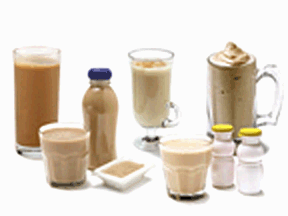
“Natural color is a growth industry,” says Ted Nixon, president, D.D. Williamson, Louisville, Ky., a producer of caramel colors. Europeans and Asians have focused on it. All food categories that currently use caramel colors can also benefit from natural colors. “We have done many [caramel-natural color] blends,” says Nixon. “That's how we began our partnership with Anaheim, Calif.-based ColorMaker, a producer of natural colors. For example, we would work with a caramel color customer who wants a redder brown.”
“Caramel dovetails with what natural colors can do,” says Stephen Lauro, director, technical services, ColorMaker. “Caramel color added to basic natural color systems gives a deeper, richer, more intense color sensation.” For example, if a customer wants a strawberry red, they can use beet powder, anthocyanins or carmine to get red, but all these colors have blue tones. Adding a yellow caramel color adds depth and produces a strawberry red color.
Caramel, The Color of Stability
Caramel colors can furnish hues ranging from yellow to amber to red to deep brown. They are made by heating sugars and are considered non-certified colors with their own Standard of Identity. There are four classes of caramel colors. Class IV, sulfite-ammonia caramel, is the type used in soft drinks. It includes a wide range of hues, from yellow to red to brown. “Most beverages are on the slightly acidic side, which is compatible with caramel. “Caramel color is stable in a wide pH range,” says Owen Parker, vice president, D.D. Williamson. Water soluble, the colors may be supplied in liquid form or spray dried powders. The industry has established a Hue Index, a numerical value to indicate the degree of yellow or red in the color.“Now we can also go on-line with our customers and show them the color range,” says Parker. “It enhances verbal comparisons.”
Caramel colors are functional, as well as aesthetic, ingredients in colas. They act as an emulsifier for oil-based flavors, and also protect the flavors from UV light degradation. Lemonade or iced tea versions of sports drinks may also use caramel colors, which are compatible with the vitamins and minerals added to the drinks.
Root beer, ginger ale, cream sodas, peppers, apple and guarana sodas may also include caramel coloring, as well as coffee or chocolate drinks.
A Natural Challenge
While caramel colors are noted for their pH stability, natural color application requires well-trained food scientists who understand how the colors may behave in a particular product, process or package.Natural colors are derived primarily from plant sources. (Carmine, a red color, is made from insects.) They are GRAS substances listed as exempt from FDA certification and are sensitive to changes in pH, heat and other processing conditions, and light.
For example, the acid level in a soft drink can affect the hue if red colors are used. Colors from anthocyanins, (purple carrot, rubini and red cabbage) look red at pH 3, but take on more blue tones as pH rises. At pH 7 they have purple hues resembling Concord grapes.
The color shift is less noticeable in yellows and oranges. Carotenoid colors are stable over a wider pH range.
Some natural colors are heat and/or light sensitive. For example, beet juice is destroyed by heat. Turmeric, on the other hand, is heat-stable and gives a bright yellow color, but breaks down in a few days under UV light. To protect a beverage's color, many soft drink manufacturers use tinted bottles or UV protective overwraps.
Single color systems will work with simple processes, but more sophisticated processes require natural color blends. With the proper emulsifiers, diluents and buffer systems, these natural blends can attain a shelf life stability of at least six months.
“Natural colorants have been around for centuries; what is unique is how we put them together,” says Lauro. By considering the technical parameters of a beverage system, caramel colors and natural colors can be used together to create visually appealing, shelf stable products. “That is what the partnership between D.D. Williamson and ColorMaker is all about,” he states.
The companies will serve the industry from ColorMaker's research and manufacturing center in Anaheim and D.D. Williamson's seven facilities around the world, including Kentucky, California, Puerto Rico, Ireland, China, Swaziland and Brazil.
D.D. Williamson.
ColorMaker.